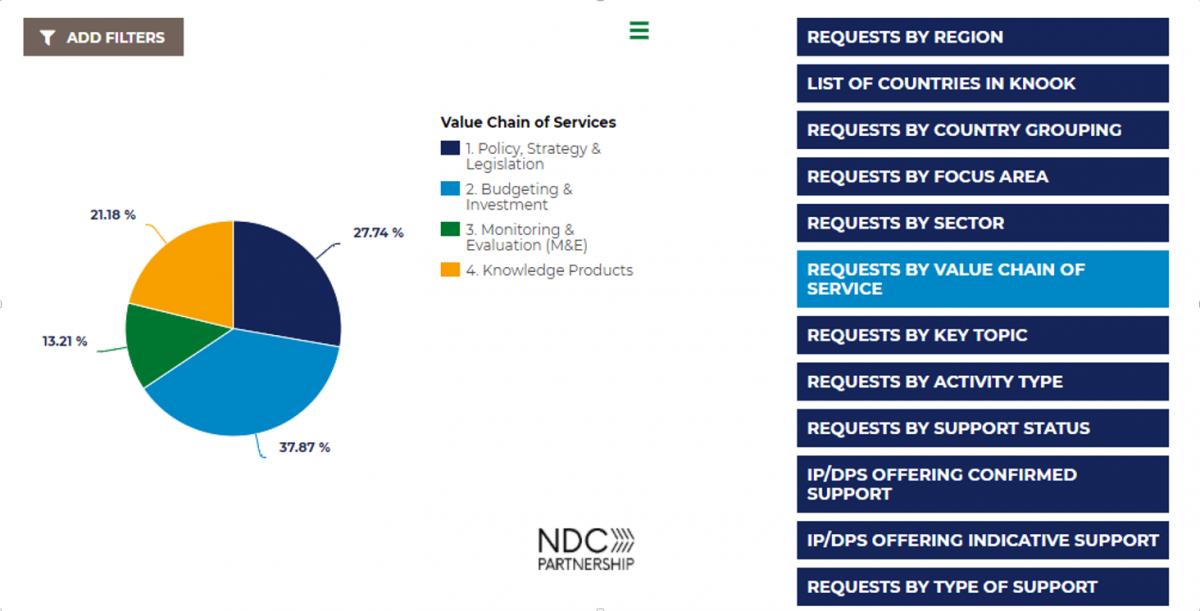Cataloguing Requests to Identify Trends: How the NDC Partnership Manages Knowledge to Accelerate Climate Action
The NDC Partnership has received more than 4,000 individual requests for NDC enhancement and implementation support since 2017. Looking at the aggregate collection of requests provides key insights on country priorities and support needs, as well as where support is flowing and where it is still needed. This, in turn, helps the Partnership better target its efforts, allowing countries to more efficiently accelerate climate action.
Taking a high-level view of all the available data, interesting trends start to emerge. For example:
-
21 percent of requests are focused on adaptation, 25 percent are on mitigation, and the remaining 54 percent are cross-cutting.
-
Some of the most common requests received deal with developing capacity and developing studies and analysis.
-
Implementing partners support more than 66 percent of requests.
Identifying diverse trends is possible thanks to the NDC Partnership's knowledge management efforts. By carefully capturing and analyzing data that comes from the country requests we receive and the support our partners offer, the Partnership can adapt its offerings and better support country needs. If we notice gaps in support around a specific area, we are able to isolate those unsupported requests and recirculate them with relevant partners.



The process of identifying trends in country requests and partner support starts with collecting and categorizing all requests and partner responses received.
To support this effort, the Support Unit created a knowledge management system known as the Knowledge Nook (kNook). Take, for example, a request on “analysis of budgetary implications of NDC implementation.” Now imagine thousands of differently worded requests all related to NDCs. Drawing out trends seems like a monumental feat.
The Partnership is actively engaged in 79 developing country members at the time of this writing. Their requests, when aggregated into the kNook database, give us access to a rich dataset which we can use to understand trends in support needs and support gaps.
The kNook catalogues each country request using various taxonomy fields including country, region, and support status, as well as key topics, sectors, and activity types. A request on “analysis of budgetary implications of NDC implementation” is not only tagged by the country submitting it and whether support has been received, but it is also tagged by key topics such as “finance and investment” and activity types such as “developing studies and analysis” and “integrating NDCs into national planning, budgets, and revenue streams.”
As with any database, trends become more apparent when more data is available. The kNook is a living database, and we add data to the kNook as soon as we receive new requests.
If you are an NDC Partnership member and are curious about trends in our country data, you can access the kNook directly. The kNook can be used in a variety of ways, including to inform country programming and support research. We constantly update the system to ensure it is as user friendly as possible, which makes accessing data easy. The kNook interface was recently updated to include updated page layouts, an advanced search section, a help section, and a data dashboard. Even if you have accessed the system in the past, you are sure to find something new.

Please reach out to Noah Maghsadi (noah.maghsadi@ndcpartnership.org) to learn more.
